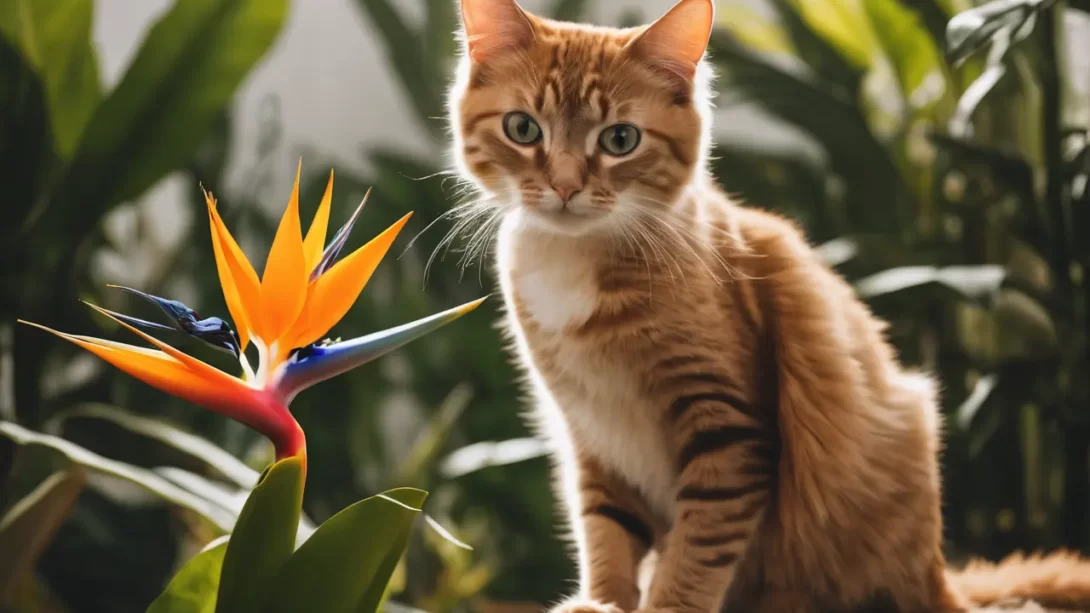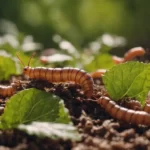The Bird of Paradise, known for its striking, vibrant blooms, is a popular choice in many gardens and homes for its ornamental value. However, for cat owners, the safety of this exotic plant is a significant concern. This article aims to delve into whether the Bird of Paradise poses a toxicity risk to cats, providing essential information for pet owners to ensure the safety of their furry companions.
The Bird of Paradise Plant
The Bird of Paradise (Strelitzia) is renowned for its large, colorful flowers that resemble a bird in flight, hence its name. There are several varieties, but the most common are Strelitzia reginae and Strelitzia nicolai, known for their orange and blue, and white flowers, respectively. Originally from South Africa, these plants thrive in warm climates and are often used in landscaping for their tropical aesthetic.
The popularity of the Bird of Paradise in home gardens and as indoor plants has grown due to its dramatic appearance and relative ease of care. However, its potential impact on household pets, particularly cats, is a concern that often goes overlooked by many plant enthusiasts and pet owners.
Toxicity of Birds of Paradise to Cats
While the Bird of Paradise is not the most toxic plant to cats, it does contain components that can be harmful. The plant contains mild toxins that can cause a variety of symptoms if ingested by cats. The primary concern is the plant’s leaves and flowers, which, when chewed or ingested, can lead to gastrointestinal upset.
Symptoms of Bird of Paradise poisoning in cats include vomiting, nausea, drowsiness, and a lack of appetite. In most cases, the symptoms are mild and can be managed at home. However, if a cat consumes a large portion of the plant or shows severe reactions, immediate veterinary attention is necessary.
What Makes Birds of Paradise Harmful to Cats
The toxicity of the Bird of Paradise plant to cats stems from specific compounds it contains. These include hydrocyanic acid and tannins, which are found in the plant’s leaves and flowers. Hydrocyanic acid can cause gastrointestinal irritation, while tannins may lead to more severe symptoms like nausea and vomiting. It’s important to note that the level of toxicity is generally considered mild to moderate, but this can vary based on the amount ingested and the individual cat’s sensitivity.
Comparatively, the Bird of Paradise is less toxic than some other common household plants, such as lilies or sago palms, which are highly poisonous to cats. Nonetheless, it’s essential to understand that even mild toxicity can cause discomfort and health issues for your cat.
Cats are typically less likely to chew on plants like the Bird of Paradise due to their less palatable nature. However, curiosity or boredom can still lead a cat to nibble on leaves or flowers, leading to potential exposure to these harmful compounds.
First Aid and Treatment for Cats Exposed to Birds of Paradise
If you suspect your cat has ingested parts of a Bird of Paradise plant, it’s important to act promptly. The first step is to remove any plant material from your cat’s mouth and provide fresh water to help reduce irritation. Observe your cat closely for any signs of distress or worsening symptoms.
In cases where the cat shows mild symptoms like drooling or a slight stomach upset, home observation may be sufficient. However, if symptoms like persistent vomiting, diarrhea, or lethargy occur, it’s crucial to seek veterinary care immediately. The vet may administer treatments such as activated charcoal to bind the toxins or provide supportive care like fluids and anti-nausea medication.
Long-term health effects from consuming Bird of Paradise are rare in cats, but it’s essential to monitor their recovery and ensure they avoid future exposure to the plant.
Preventive Measures and Safe Gardening Practices
Ensuring the safety of your pets while enjoying your Bird of Paradise plant requires thoughtful measures and careful planning. Here are some tips to help cat owners maintain a harmonious environment for both their plants and pets:
- Plant Placement: Keep your Bird of Paradise in an area that’s inaccessible to your cat. Elevated plant stands, shelves, or rooms that your cat cannot enter are ideal locations.
- Use of Physical Barriers: Consider using physical barriers like plant cages or decorative fences around your plants. This can prevent curious cats from getting too close to potentially harmful plants.
- Training Your Cat: Discourage your cat from approaching plants through gentle training. Using deterrents like citrus peels or motion-activated devices near the plant can help keep your cat at a safe distance.
- Choosing Pet-Safe Plants: If you’re concerned about the potential risks, opt for cat-safe alternatives. Plants like spider plant, Boston fern, and African violet are attractive and non-toxic to cats.
- Regular Monitoring: Regularly check both your plants and pets for any signs of distress. Prompt intervention can prevent serious health issues and protect your garden’s aesthetic.
Conclusion
While the Bird of Paradise plant does contain mild toxins that can affect cats, with proper precautions, it’s possible to safely include this exotic plant in a pet-friendly home. The key is to balance the beauty of your plants with the safety and well-being of your pets.
Remember, every cat is different, and what deters one may not work for another. It’s important to be vigilant and responsive to your pet’s behavior around plants. By implementing the preventive measures outlined above, you can create a safe and enjoyable environment for both your feline friend and your cherished plants.
In conclusion, the Bird of Paradise poses a low to moderate risk to cats, but this doesn’t mean you have to give up on having beautiful plants in your home. With careful planning and consideration, you can enjoy the best of both worlds. Keep your pets safe, your plants thriving, and your home a harmonious sanctuary for all its inhabitants.



